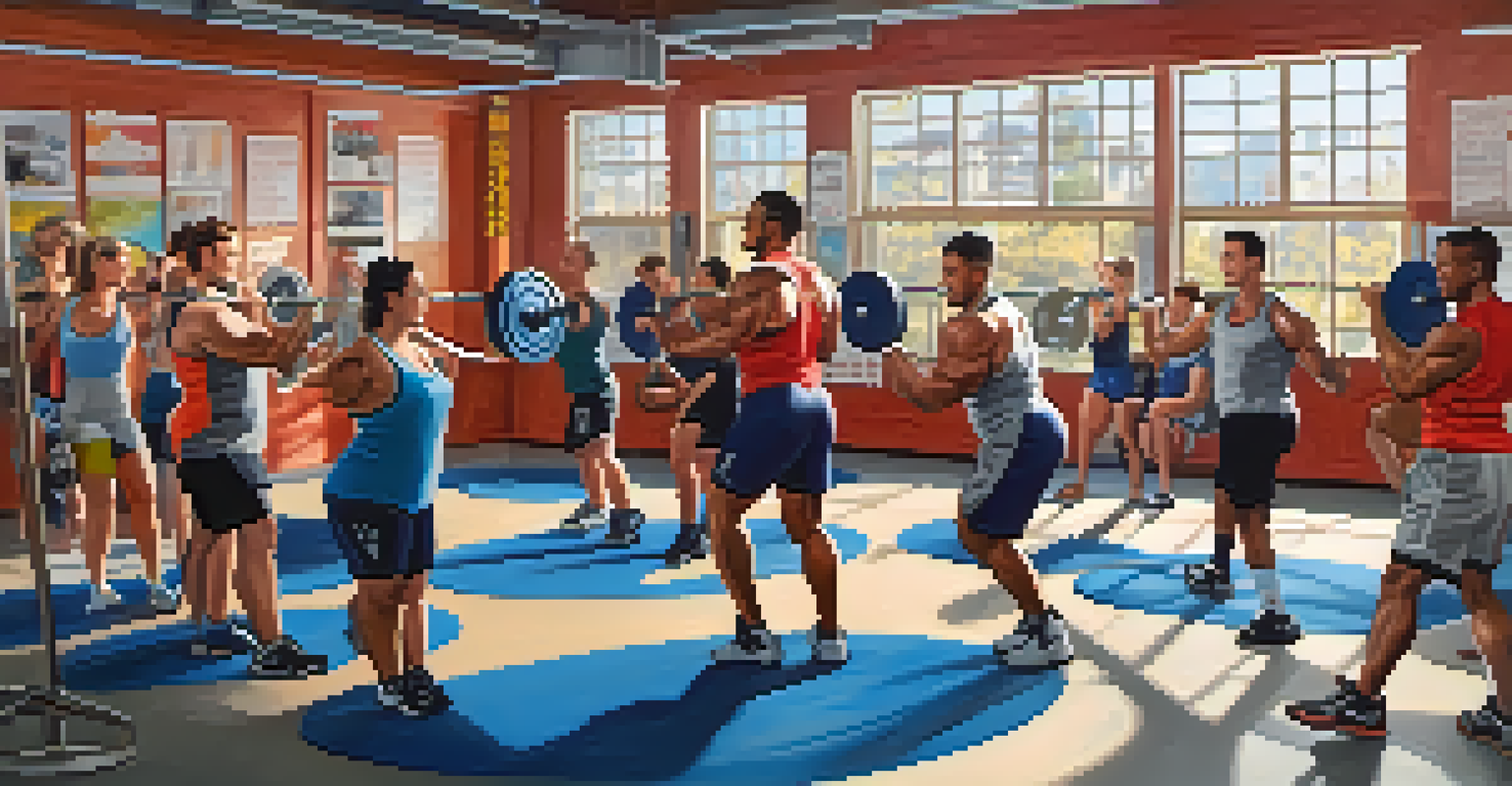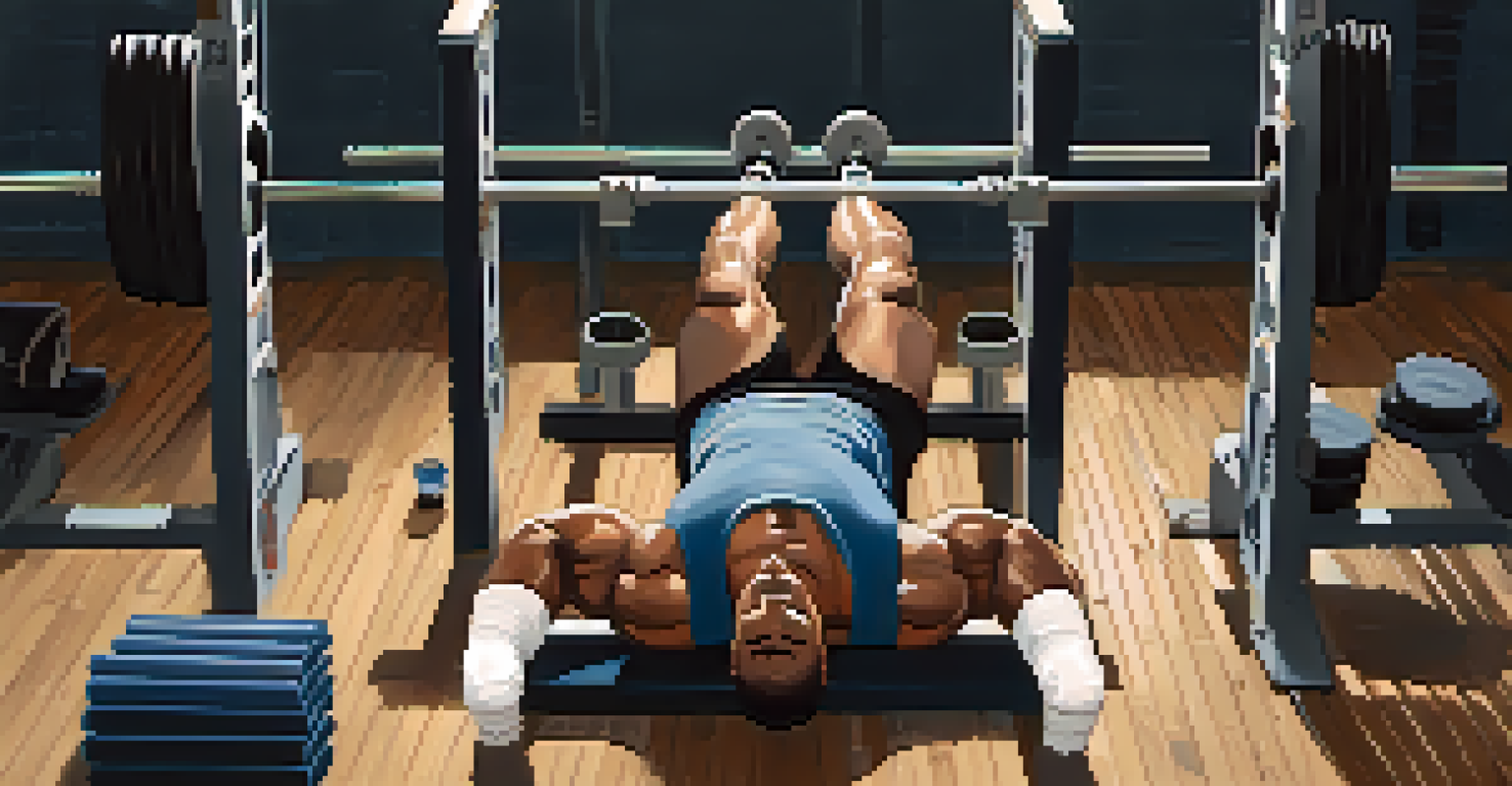Injury Prevention Strategies for Powerlifters and Lifters

Understanding Common Injuries in Powerlifting
Powerlifting, like any sport, comes with its own set of risks. Common injuries include strains, sprains, and overuse injuries, often affecting the lower back, shoulders, and knees. Understanding these injuries is crucial for any lifter aiming to optimize performance while minimizing risk.
The difference between a successful person and others is not a lack of strength, not a lack of knowledge, but rather a lack in will.
For instance, a lifter may experience a lower back strain from poor form during deadlifts. This not only affects their ability to lift but can also lead to long-term issues if not addressed. Recognizing these potential pitfalls can help lifters take proactive measures before they occur.
By being aware of common injuries, powerlifters can tailor their training and recovery strategies accordingly. This awareness fosters a culture of safety that encourages athletes to listen to their bodies and seek help when needed.
Warm-Up: The Key to Injury Prevention
A proper warm-up is more than just a routine; it's a vital part of any lifting session. It prepares your muscles and joints for the intense activity ahead, increasing blood flow and flexibility. Skipping this step can leave you vulnerable to injuries.

For example, dynamic stretches and mobility exercises can significantly enhance your range of motion, making heavy lifts feel smoother. Incorporating movements like leg swings and arm circles can also activate the muscles you'll be using during your workout.
Injury Awareness is Crucial
Understanding common injuries helps powerlifters tailor their training and recovery strategies to minimize risks.
Ultimately, a good warm-up sets the tone for the entire lifting session. It not only helps in preventing injuries but can also improve overall performance, allowing lifters to push their limits safely.
Proper Technique: Lift Smart to Stay Safe
Using proper lifting technique is essential for preventing injuries in powerlifting. Each lift has specific form cues that, when followed, can help distribute the load evenly and reduce undue stress on joints. Ignoring these cues can lead to serious injuries over time.
Strength does not come from physical capacity. It comes from an indomitable will.
For instance, maintaining a neutral spine during deadlifts is crucial. If a lifter rounds their back, they are at a higher risk of sustaining a lower back injury. Focusing on technique not only keeps you safe but also enhances your lifting efficiency.
Investing time in learning and refining your technique pays off in the long run. Whether it's through coaching, video analysis, or practice, mastering your form should always be a priority for every lifter.
Rest and Recovery: Essential Components
Rest and recovery are often overlooked by powerlifters who are eager to hit new personal records. However, adequate recovery time is essential for muscle repair and growth, and it plays a crucial role in injury prevention. Without it, lifters may experience fatigue, which can lead to poor form and increased injury risk.
For example, incorporating rest days into your training schedule allows your body to recover and adapt to the stresses of lifting. Active recovery methods, such as light cardio or yoga, can also promote blood flow and speed up recovery.
Warm-Up for Injury Prevention
A proper warm-up enhances muscle flexibility and prepares the body for lifting, reducing the chance of injury.
Ultimately, listening to your body and respecting its need for rest can make a significant difference in your lifting journey. Prioritizing recovery is not a sign of weakness; rather, it's a smart strategy for long-term success.
Strengthening Supporting Muscles
Focusing on supporting muscle groups is a smart strategy for injury prevention. While powerlifting primarily targets major muscle groups, neglecting smaller stabilizing muscles can lead to imbalances that increase injury risk. Incorporating accessory exercises can help build strength in these areas.
For instance, including exercises like rows, lunges, or planks can enhance overall stability and support your main lifts. Stronger stabilizers help maintain proper form during heavy lifts, reducing the likelihood of injury.
By prioritizing these supporting muscles, lifters can create a well-rounded training program. This not only helps in injury prevention but also improves overall lifting performance.
Nutrition: Fueling Injury Prevention
Good nutrition plays a crucial role in injury prevention for powerlifters. A well-balanced diet ensures that your body has the necessary nutrients to recover and perform at its best. Without proper fuel, you may become fatigued, which can lead to poor lifting mechanics and increased injury risk.
For example, consuming enough protein aids in muscle repair, while carbohydrates provide the energy needed for intense workouts. Hydration is equally important, as even mild dehydration can impact performance and increase the likelihood of injuries.
Listen to Your Body's Signals
Recognizing signs of fatigue or discomfort empowers lifters to make informed decisions that prioritize their health.
Incorporating a variety of whole foods into your diet can support your lifting endeavors. By fueling your body correctly, you lay the groundwork for safe and effective training.
Listening to Your Body: Know When to Stop
One of the most important strategies for injury prevention is learning to listen to your body. Recognizing signs of fatigue, pain, or discomfort can help you make informed decisions about when to push through or when to take a step back. Ignoring these signals often leads to injuries that could have been avoided.
For example, if you feel a sharp pain in your shoulder during a bench press, it's essential to stop and assess the situation. Continuing to lift through pain can exacerbate the issue and lead to long-term damage.

By tuning into your body, you empower yourself to make choices that prioritize your health. Embracing this mindset fosters a healthier relationship with lifting and promotes longevity in the sport.